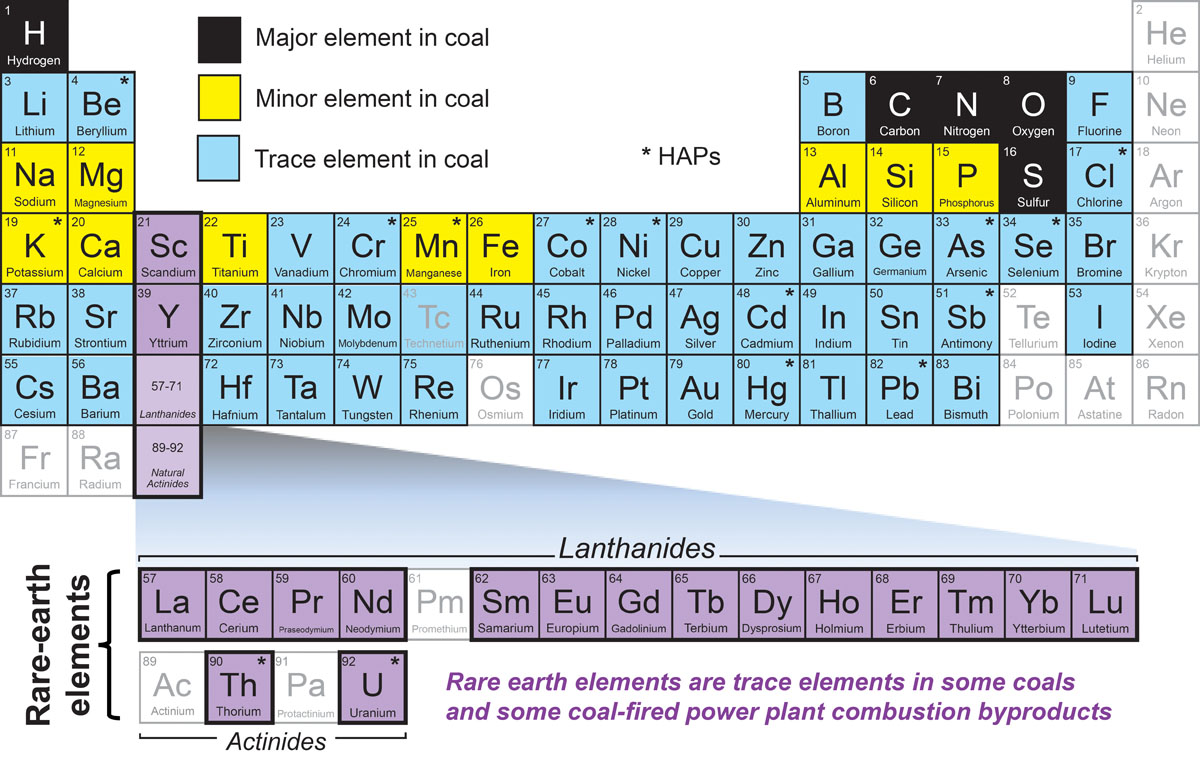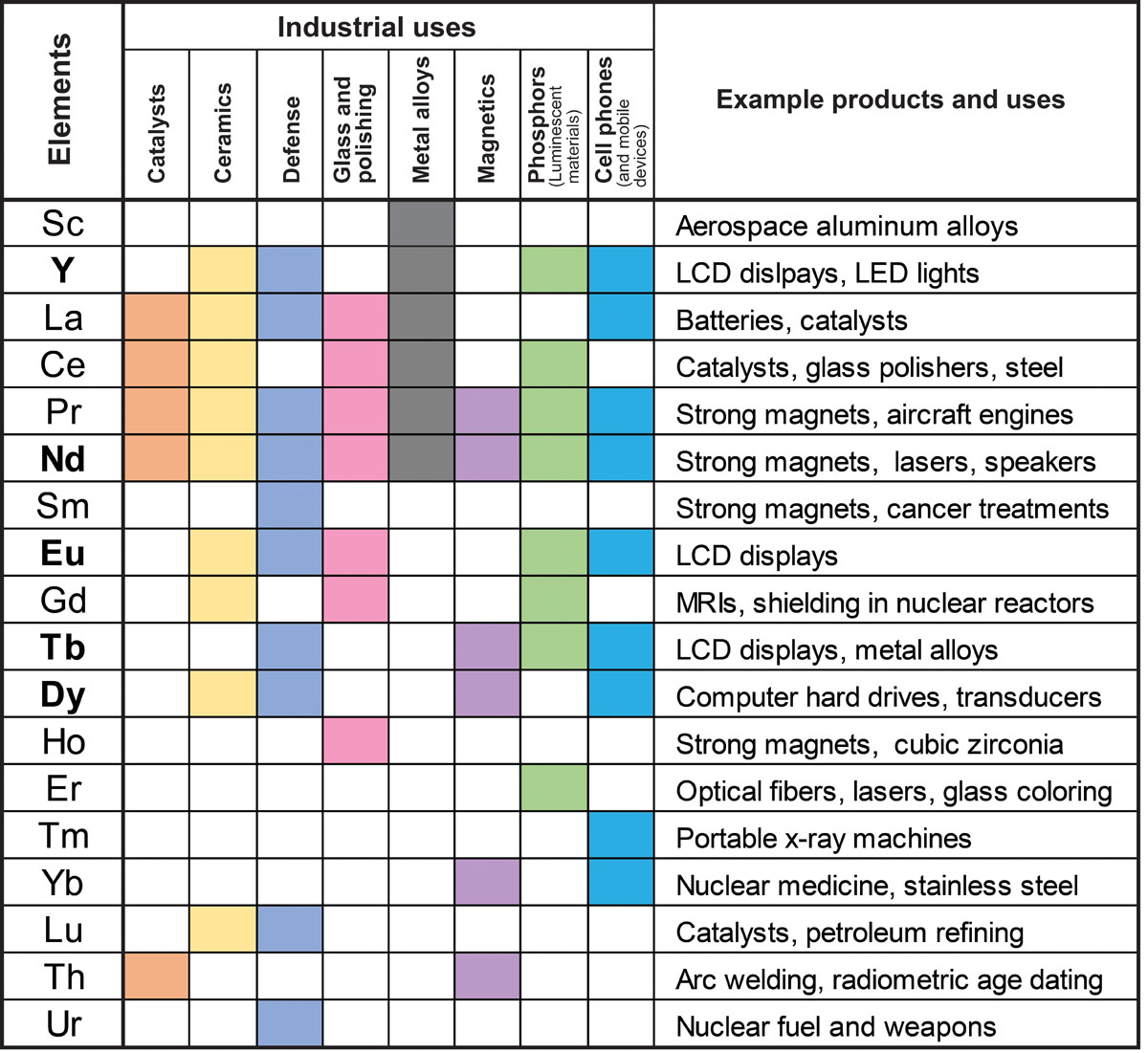Characterization of Rare Earth Elements in Coal
by Rudy P. SysAdmin at howtofindthemoneyCoal and coal preparation products are also potential sources of rare-earth elements. REEs are a group of elements (shown in purple on the periodic table below) unknown to most people. They include the lanthanide series elements (cerium through lutetium), yttrium, and scandium. Although relatively unheard of, rare earth elements are very important in our modern technological world, because they are used in a variety of products people use every day, including televisions and cellphones.
China currently produces most of the world's REEs (85 percent). They used to export large quantities of REEs to other countries ; in 2000, more than 90 percent of the REEs used in the United States were from China ( Haxel and others, 2002). Now, however, China is using most of what they produce domestically. As Chinese sources have diminished, world demand has increased. The U.S. Government and many manufacturing companies are looking for new domestic sources of REEs. One of those sources may be coal and coal waste.

Rare earth elements that have been reported in coal seams. Not all seams have these elements.

Products made from rare earth elements.
REEs occur in very small trace amounts in coals and coal byproducts. Trace amounts are measured in microscopic concentrations of 100 parts per million or less. However, small amounts can be concentrated by large-scale mining and preparation. In fact, a recent study suggests that Appalachian coal bed refuse may contain one of the largest REE resources in the United States (Taggart and others, 2016).
Much work is ongoing to discover the highest commercial concentrations of REEs in specific coal beds and specific coal byproducts. The Department of Mining Engineering, Center for Applied Energy Research, and Kentucky Geological Survey, all at the University of Kentucky, are testing Kentucky- mined coals and coal byproducts for their REE content and concentration, and testing the potential for commercial extraction of REEs from coal and coal byproducts. Professor Rick Honaker of the Department of Mining Engineering at UK was awarded a $1 million research grant from the U.S. Department of Energy’s National Energy Technology Laboratory to develop a mobile pilot plant for the recovery of REEs from coal. In addition, Professor Jim Hower of UK’s Center for Applied Energy Research is collaborating on several grants to test methods to recover REEs from coal combustion residues and from the Fire Clay coal in eastern Kentucky. The Fire Clay coal has relatively high REE concentrations in some areas because it contains a volcanic ash bed, which may have been the source of its REEs (Hower and others, 1999).

REE Average composition (mg/kg) in coal and coal ash
Sponsor Ads
Created on Jul 10th 2019 08:20. Viewed 711 times.
Comments
No comment, be the first to comment.



